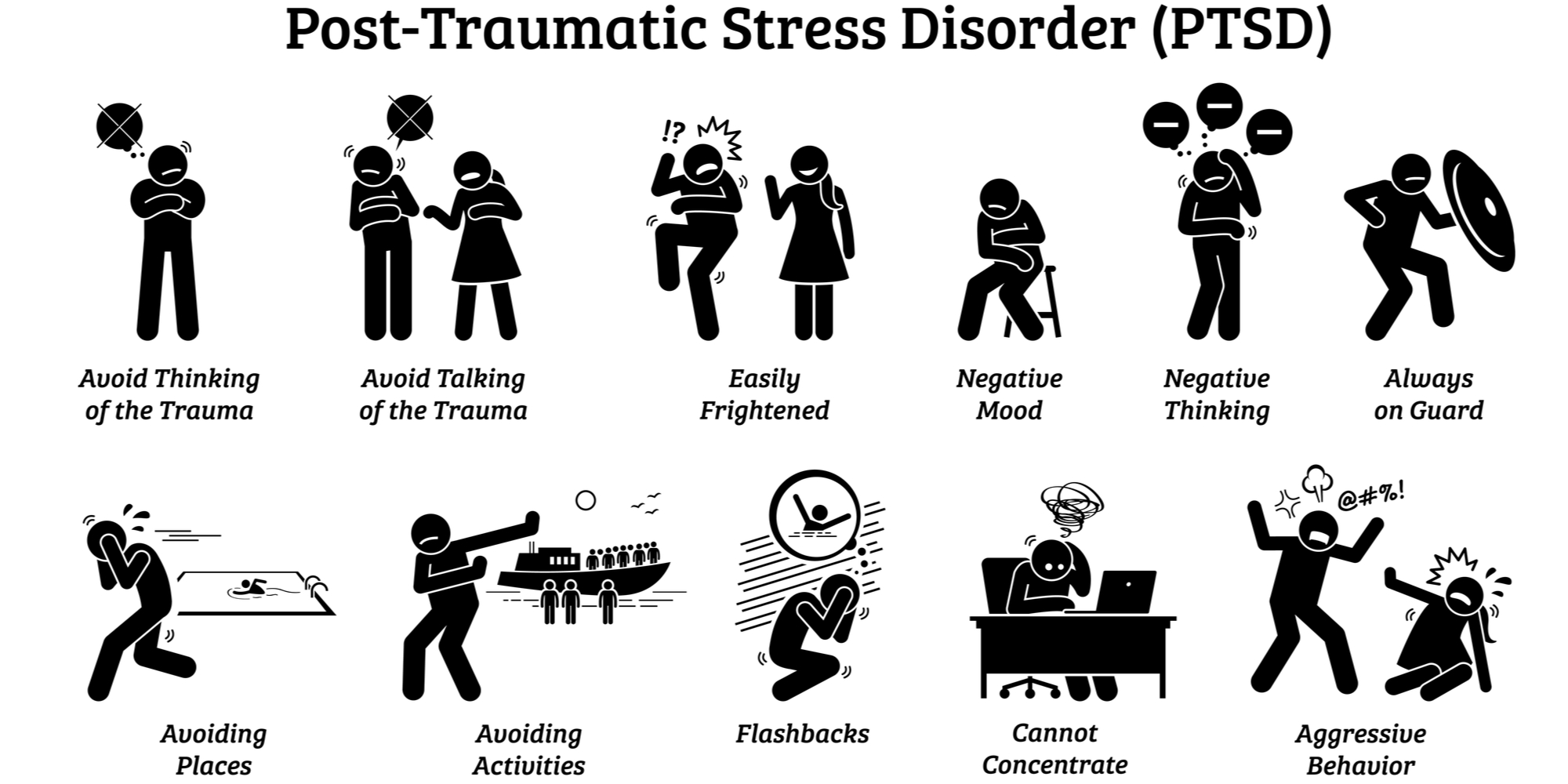Post-Traumatic Stress Disorder
Post-traumatic stress disorder (PTSD) is a debilitating condition that can develop following a terrifying event. Often people with PTSD have persistent frightening thoughts and memories of their ordeal and feel emotionally numb.
PTSD was first brought to public attention by war veterans, but it can result from any number of traumatic incidents. These include: violent attacks such as mugging, rape, or torture; being kidnapped or held captive; child abuse, sexual assault; serious accidents such as car or train wrecks; and natural disasters such as hurricanes or earthquakes. The event that triggers PTSD may be something that threatened the person’s life or the life of someone close to him or her. Or, it could be something witnessed, such as massive death and destruction after a building is bombed or a plane crashes.
Some Fast Facts About PTSD
- 5.2 million Americans ages 18-54 are diagnosed with PTSD.
- PTSD can develop after an individual experiences a traumatic event such as sexual or physical assault, witnessing a death, the unexpected death of a loved one, natural disaster or a terrorist attack.
- 67% of those exposed to mass violence have been shown to develop PTSD – a higher rate than those exposed to other types of traumatic events, such as natural disasters.
- One study shows that 8% of Manhattan residents living below 110th street (approximately 67,000 people) probable have PTSD related to September 11, 2001.
- 2 to 4% of people in the United States appear to have PTSD related to the 9/11 attacks.
- People who have experienced previous traumatic events run a higher risk of developing PTSD.
- Treatment of PTSD can include Cognitive Behavioral Therapy (CBT), group therapy, exposure therapy, and medication.
Whatever the source of the problem, some people with PTSD repeatedly re-live the trauma in the form of nightmares and disturbing recollections during the day. They may also experience other sleep problems, feel detached or numb, or be easily startled. They may lose interest in things they used to enjoy and have trouble feeling affectionate. They may feel irritable, more aggressive than before, or even violent. Things that remind them of the trauma may be very distressing, which could lead them to avoid certain places or situations that bring back those memories. Anniversaries of the traumatic event are often very difficult.
Women are more likely than men to develop PTSD. PTSD can occur at any age, including childhood, and there is some evidence that the tendency for PTSD may run in families. The disorder can be accompanied by depression, substance abuse, or one or more other anxiety disorders. In severe cases, the person may have trouble working or socializing. In general, the symptoms seem to be worse if the event that triggered them was deliberately initiated by a person – such as a rape or kidnapping.
Ordinary events can serve as reminders of the trauma and trigger flashbacks or intrusive images. A person having a flashback, which can come in the form of images, sounds, smells, or feelings, may lose touch with reality and believe that the traumatic event is happening all over again.
Not every traumatized person gets full-blown PTSD, or experiences PTSD at all. PTSD is diagnosed only if the symptoms last more than a month. Symptoms usually begin within three months of a trauma, although there can be a delayed onset and six months can pass between trauma and the appearance of symptoms. In some cases years can pass before symptoms appear, in this case the symptoms are often triggered by the anniversary of the trauma, or with the experience of another traumatic event. Symptoms may vary in frequency and intensity over time.
What Kind of Therapy is Recommended?
Most of the therapy that’s done for people who are traumatized is a mixture of different approaches that include psychodynamic, interpersonal and cognitive behavioral perspectives. There are some kinds of specific cognitive behavioral approaches that have been shown through research to be helpful. For example, there is stress inoculation training (SIT) through which people learn a series of skills in terms of coping with anxiety, coping with their bodily reactions, such as jumpiness, and learning how to deal with stress. There are also types of exposure therapies such as progressive desensitization, in which people gradually approach remembering the trauma in increments that they can tolerate.
Psychiatric Medications As A Part of Treatment
There are a number of psychiatric medications that have an official FDA indication for PTSD. Those are mostly some of the newer antidepressants, the selective serotonin reuptake inhibitors (SSRIs). However, the effectiveness of those medications and a variety of other psychiatric medications varies enormously by patient. Some PTSD patients may do well on mood stabilizers, beta blockers (which help control the manifestations of bodily overactivation) or even antipsychotic medications that may help agitation and anxiety and flashbacks.
(Partial Source: National Institute of Mental Health)
Resources on the Web:
Gift From Within – PTSD Resources for Survivors and Caregivers
International Society for Traumatic Stress Studies (ISTSS)
